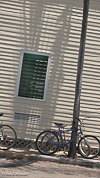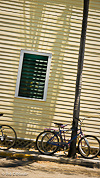
Camera Image

Final Image
With my many years in photography (Polaroid R&D Emulsions; Nikon; US Patent in Color Printing; Olympus; teaching; etc.), the single biggest evolution in photography was not Film to Digital but the non-destructive processing of digital camera raw image capture. (a.k.a. Parametric Image Editing – P. I. E.).
There are many aspects to consider in the digital image workflow (exposure considerations, raw data converters, etc.) which I will address in other articles. In this post,I will address the single biggest evolution – the non-destructive processing of the digital raw image data. I will chart the 4 distinct phases of processing the digital image and the parallel steps to B&W film processing. And, at the end, I will show an example with the digital processing applied for each of these 4 Phases. Let’s begin…
It is become apparent to me that there are distinctly 4 Phases when processing the digital image: 1. Import 2. Global 3. Selective 4. Expressive
Read more…
There are big changes coming to the way we use Photoshop and Lightroom.
Seems like there will be no more Photoshop as we know it after version CS6. Photoshop will move to the “cloud” starting in June 2013 available only through a monthly subscription fee. It will reside in Adobe’s “Creative Cloud” as “Photoshop CC”… no more upgrading versions of PS – no differentiating PS from PS “Extended, just one version with continuous updating of the program on the cloud. Much has been posted already and I am sure there will be much more.[Click Here for the Adobe press release] [Click Here for Adobe’s spin: “A Break from Tradition”]
The focus of this post… its effect on our Photoshop / Lightroom / Camera Raw workflow. Read more…
 If you are at all interested in converting your color images to B&W, George Jardine is offering a wonderful free video tutorial – a must see. The first 20 minutes are the definitive tutorials to understand digital theory when converting color to B&W digital. The last 16 minutes provide the many considerations when processing your B&W digital images. The examples, both color theory and photos converted to B&W, are excellent.
If you are at all interested in converting your color images to B&W, George Jardine is offering a wonderful free video tutorial – a must see. The first 20 minutes are the definitive tutorials to understand digital theory when converting color to B&W digital. The last 16 minutes provide the many considerations when processing your B&W digital images. The examples, both color theory and photos converted to B&W, are excellent.
I don’t think we need try to Read more…


